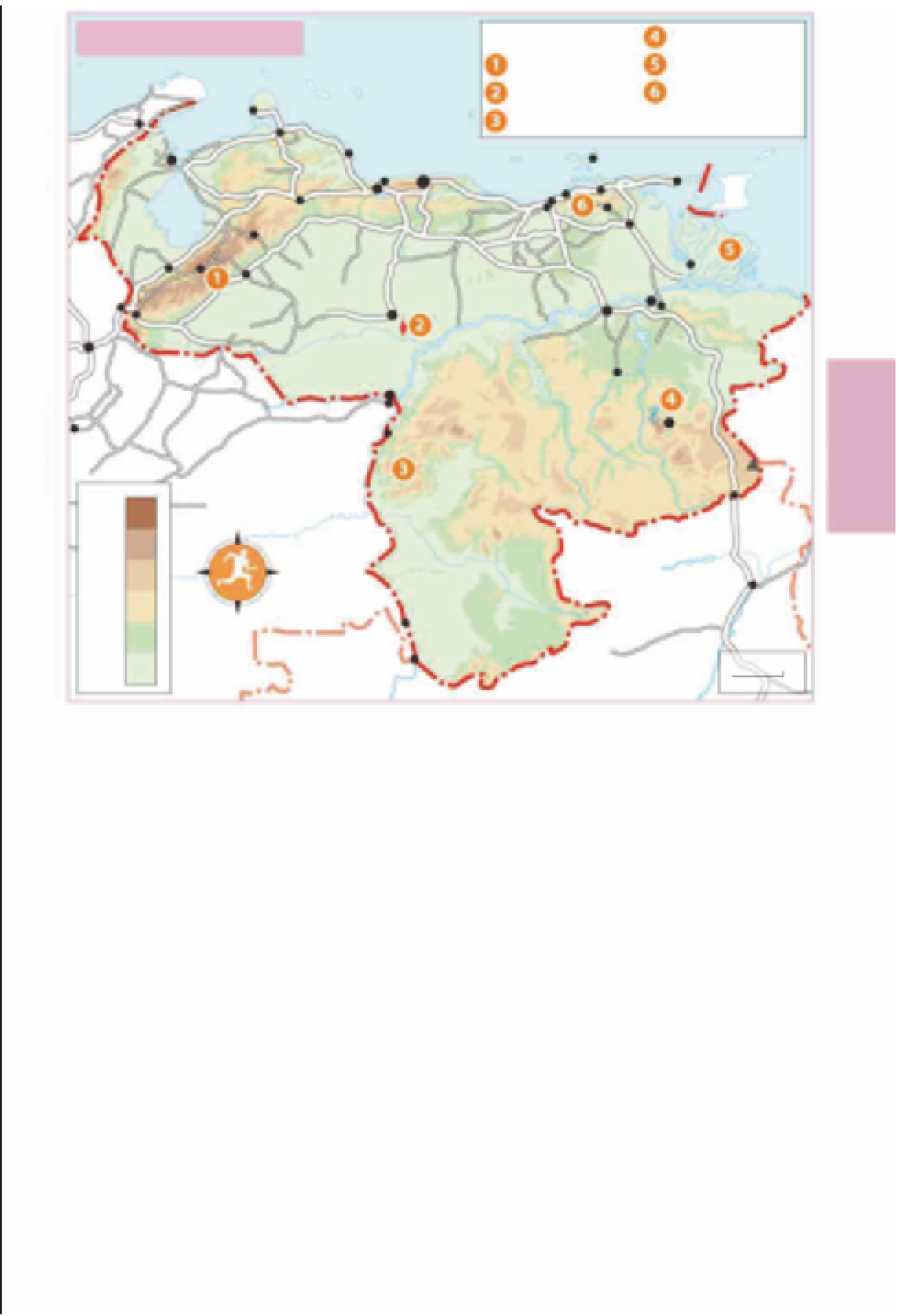Travel Reference
In-Depth Information
VENEZUELA
CARIBBEAN
SEA
HIGHLIGHTS
Mérida
Los Llanos
Amazonas
Angel Falls
Orinoco Delta
Parque Nacional
Mochima
Aruba
Bonaire
Los Roques Archipelbo
Punto Fijo
Curaçao
Golfo de
Venezuela
Maicao
Coro
Isla de Margarita
Tobago
Chichiriviche
Choroní
PARQUE
NACIONAL
MORROCOY
Porlamar
CARACAS
Santa
Fe
Maracaibo
Guiria
Puerto
La Cruz
Chacopata
Caripe
Trinidad
Maracay
PARQUE
NACIONAL
HENRI PITTIER
Lago de
Maracaibo
Barquismeto
Barcelona
Maturín
Trujillo
PARQUE
NACIONAL
MOCHIMA
Tucupita
Mérida
El Vigia
Orinoco Delta
Barinas
San Fernando
de Apure
Puerto Ordáz
Cúcuta
San Félix
San Cristóbal
Ciudad
Bolívar
Los Llanos
PARQUE
NACIONAL
CANAIMA
Bucaramanga
La Paragua
11
Puerto Páez
Puerto Carreño
Angel
Falls
GUYANA
Puerto Ayacucho
Canaima
Tunja
Mt Roraima
(2810m)
COLOMBIA
Santa Elena de Uairén
Metres
4000
N
2000
1000
Boa Vista
BRAZIL
500
200
San Carlos de Río Negro
San Simón de Cocuy
0
100
0
kilometres
where
Angel Falls
, the
world's highest
waterfall, plunges a vertical kilometre
into the jungle below.
CHRONOLOGY
C.13,000 BC-1498 AD
Roughly 500,000 indigenous
peoples live in the area today covered by Venezuela,
belonging to three principal ethno-linguistic groups: Carib,
Arawak and Chibcha.
1498
Christopher Columbus arrives August 4 at the
eastern tip of the Paria Peninsula and continues south to
the Orinoco Delta.
1502
Italian Amerigo Vespucci sees the Arawak houses
on wooden stilts in Lake Maracaibo and calls the place
Venezuela, or “little Venice”. Enslavement of the indigenous
population for pearl harvesting begins around this time.
1521
The first European settlement is established at
Cumaná, on the northeast coast, serving as a base for
Catholic missionaries and further exploration of the
mainland.
Late 1500s
The Creoles, Spanish descendants born in
the New World, accumulate slaves, agricultural wealth and
a large degree of autonomy.
1819-21
Simón Bolívar, a wealthy Creole landowner
from Caracas, wins several naval battles against the
Spanish and liberates the territory of Colombia. Bolívar
proclaims the new Republic of Gran Colombia, an
independent nation made up of modern-day Venezuela,
Colombia and Ecuador. He subsequently liberates Peru
and Bolivia.
1829
Gran Colombia disbands in the face of irreconcilable
internal disputes, and Bolívar, bitterly disappointed by the
dissolution of his dream, succumbs to tuberculosis.
1859-63
A power struggle between Liberals and Conser-
vatives, known as the Federal War, results in Liberal control
of Venezuela until the turn of the century.
1908-35
General Juan Vicente Gómez rules the country
and becomes one of Venezuela's most brutal dictators.
Press and public freedoms are curtailed and political
dissidents murdered.
1918
Oil is discovered in Venezuela along the Caribbean
coastline, and ten years later the country is the largest
producer in the world. Gómez pays off all foreign debts and
invests in roads, ports and public buildings.
1973
Carlos Andrés Pérez is elected and governs Venezuela
through one of its most prosperous periods, during which





































Search WWH ::

Custom Search